Lübeck was the queen of the Baltic Sea Region’s Hanseatic cities. It still is, and that is not without reason. Majestic churches and countless houses, monasteries and other medieval buildings stand as evidence of the immense wealth that came to the city over the centuries with trade routes.
The old town of Lübeck is located on an island in the Trave River, which provides a natural boundary for this part of the city where everything is within walking distance. In addition, the river and its banks are like a blue-green belt around the city, which can be enjoyed in many places, for example on a river boat, where you sail the Trave around the center of Lübeck.
There are many interesting sights in Lübeck’s center with the city’s many great medieval churches at the forefront. Marienkirche and Lübeck cathedral are the two most well-known churches, which form the famous skyline of the Hanseatic city. You can also enjoy nice squares and other famous buildings such as the city hall and the city gates Holstentor and Burgtor.
As one of Northern Germany’s largest cities, there is a rich selection of culture, museums, shopping and gastronomic experiences in Lübeck. Much of it takes place in the medieval surroundings of the city’s old and cozy buildings, and among the more recent things to see is the beautiful and tasty marzipan salon. Here are various delicacies of the famous Lübeck marzipan.
It is easy to get to the countryside and to other cities and towns as well. It is not far to i.e. Hamburg, Schwerin and Wismar with great sights and many activities. You can also enjoy the lakelands around Plön and Eutin or make a day to the lovely beaches in Travemünde or the island of Fehmarn.
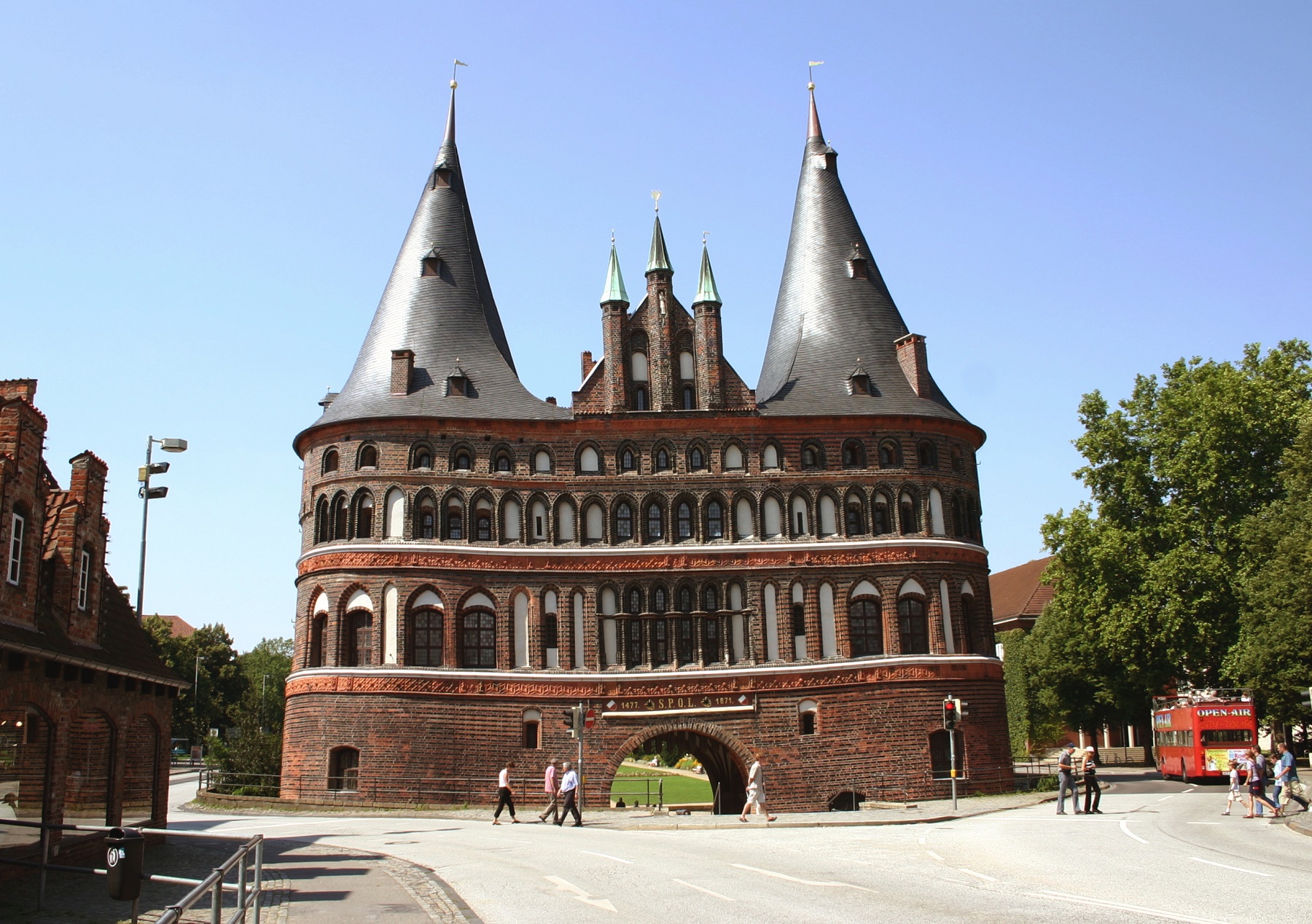
The impressive city gate Holstentor was built in the years 1464-1478 as part of the city’s fortifications. Today, the gate is Lübeck’s landmark, and you can visit the city history museum in the beautiful building.
A harbor tour of Lübeck is a unique way to see the city’s sights. You can sail around the old town on the river Trave and see the city skyline, which is dominated by Lübeck’s large churches.
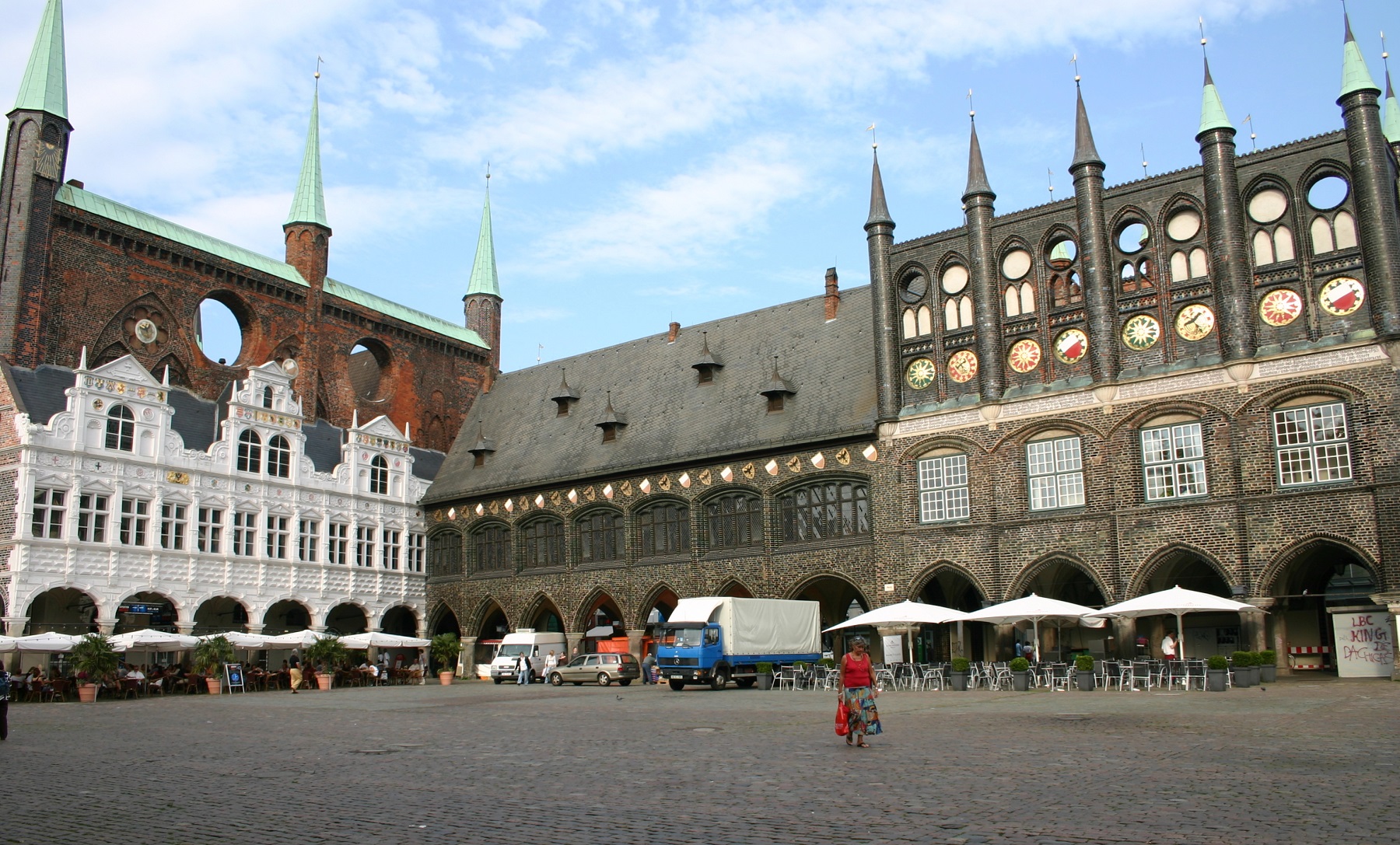
Lübeck’s beautiful town hall was built in the 13th and 14th centuries and expanded through the 15th and 16th centuries. The town hall buildings are interesting with their archways, coats of arms and varied architecture.
The Hospital of the Holy Spirit is one of the world’s oldest social institutions and at the same time a magnificent example of a monumental medieval building. The hospital was built in the 13th century.
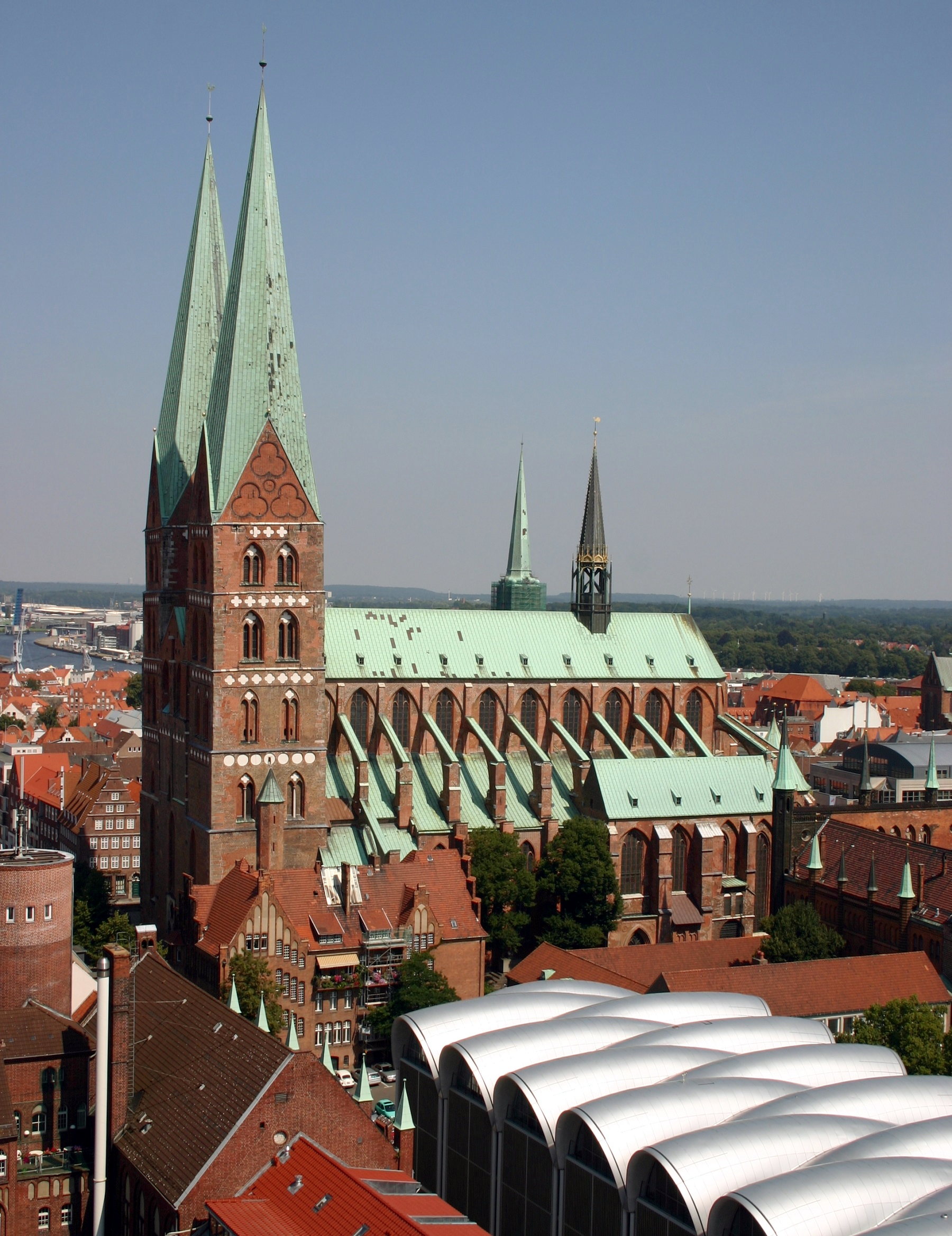
This is Germany’s third largest church, and it has been the inspiration for countless brick churches in the so-called brick Gothic. The church was built 1250-1350 as a symbol of Lübeck’s wealth and prosperity. It has an impressive interior.
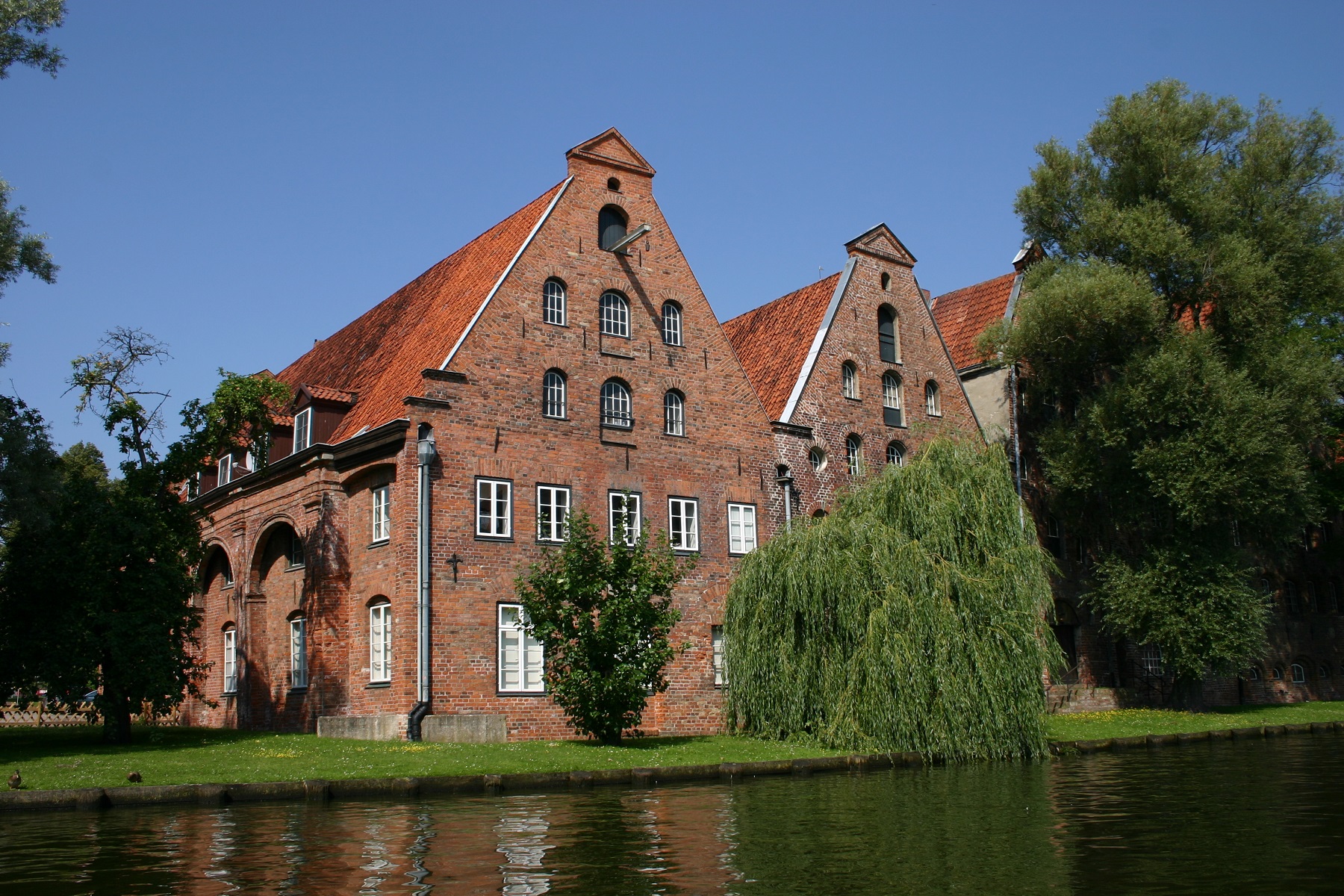
Salzspeicher is the name of six warehouse buildings along the river Trave. They were built in the period 1579-1745 and used to store the salt that was sailed to here from the Lüneburg area.
St. Petri is one of Lübeck’s great churches. It was built through the 1100s-1400s with a 108 meter/354 foot high church tower, in which there is a viewing platform at a height of 50 meters/164 feet. From here there is a beautiful view of the city.
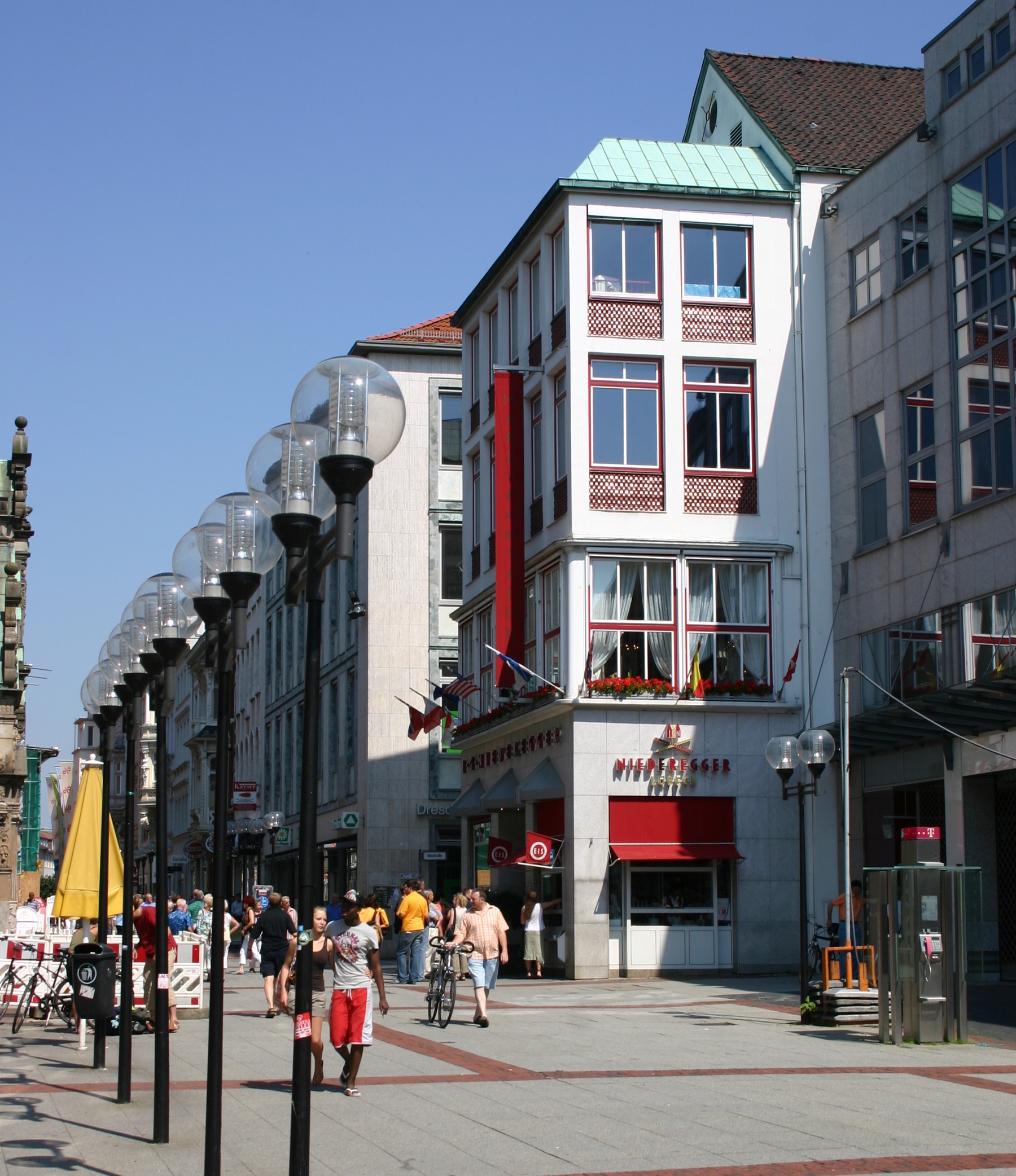
Niederegger is an icon of Lübeck, and the marzipan salon is home to the famous Lübeck marzipan, which is available in countless designs and colors.
This pharmacy is one of the city’s oldest secular buildings. The present gabled brick house was built in 1230 and was inhabited for centuries before becoming a pharmacy in 1812.
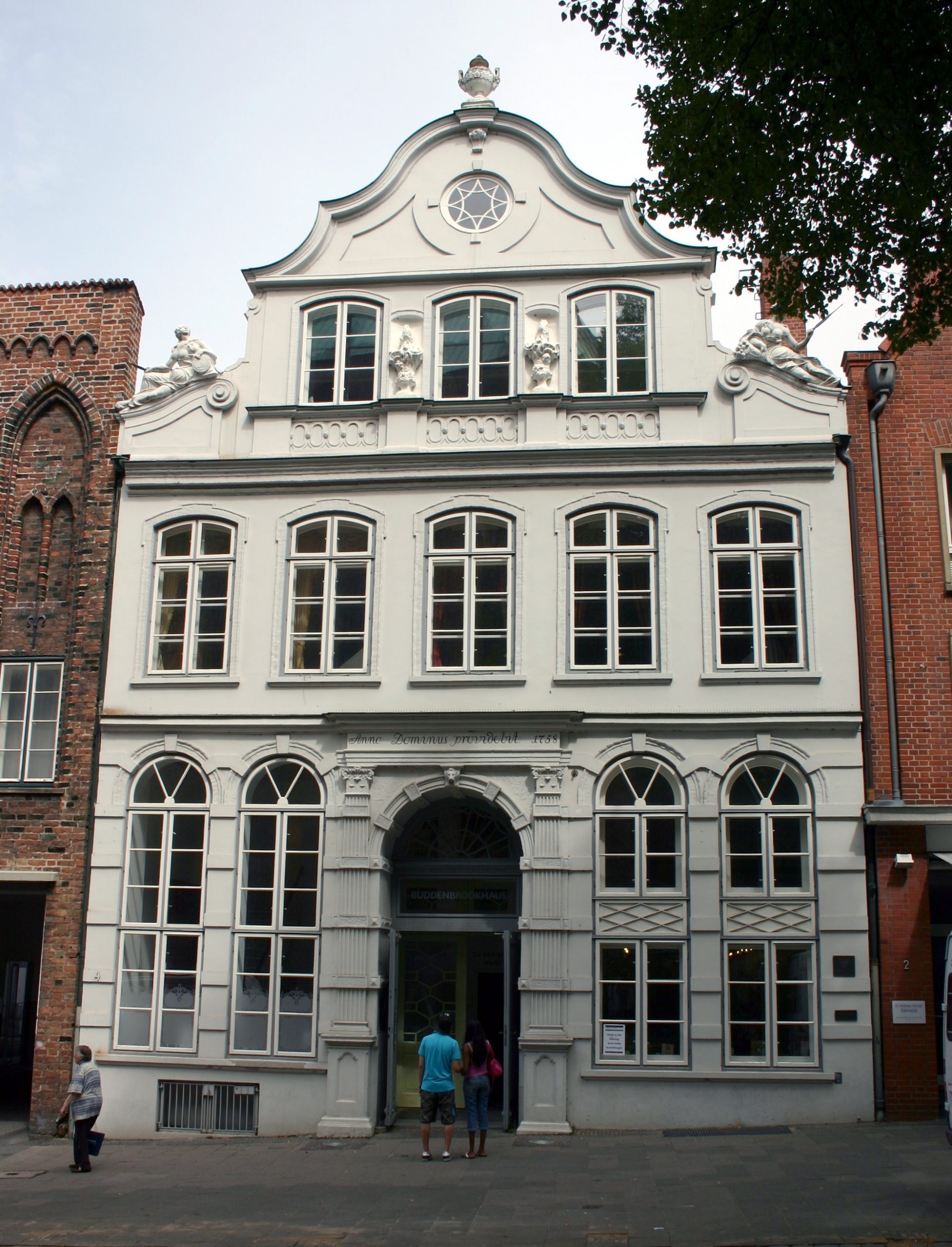
This house is the setting for Thomas Mann’s Nobel Prize-winning novel Buddenbrook. The Mann family lived in the beautiful old town house from 1758, and it is now open as a museum.
Saint Catherine is the only preserved monastic church in Lübeck, and it is today open as a museum church. You can e.g. see Tintoretto’s mural of Lazarus’ resurrection here.
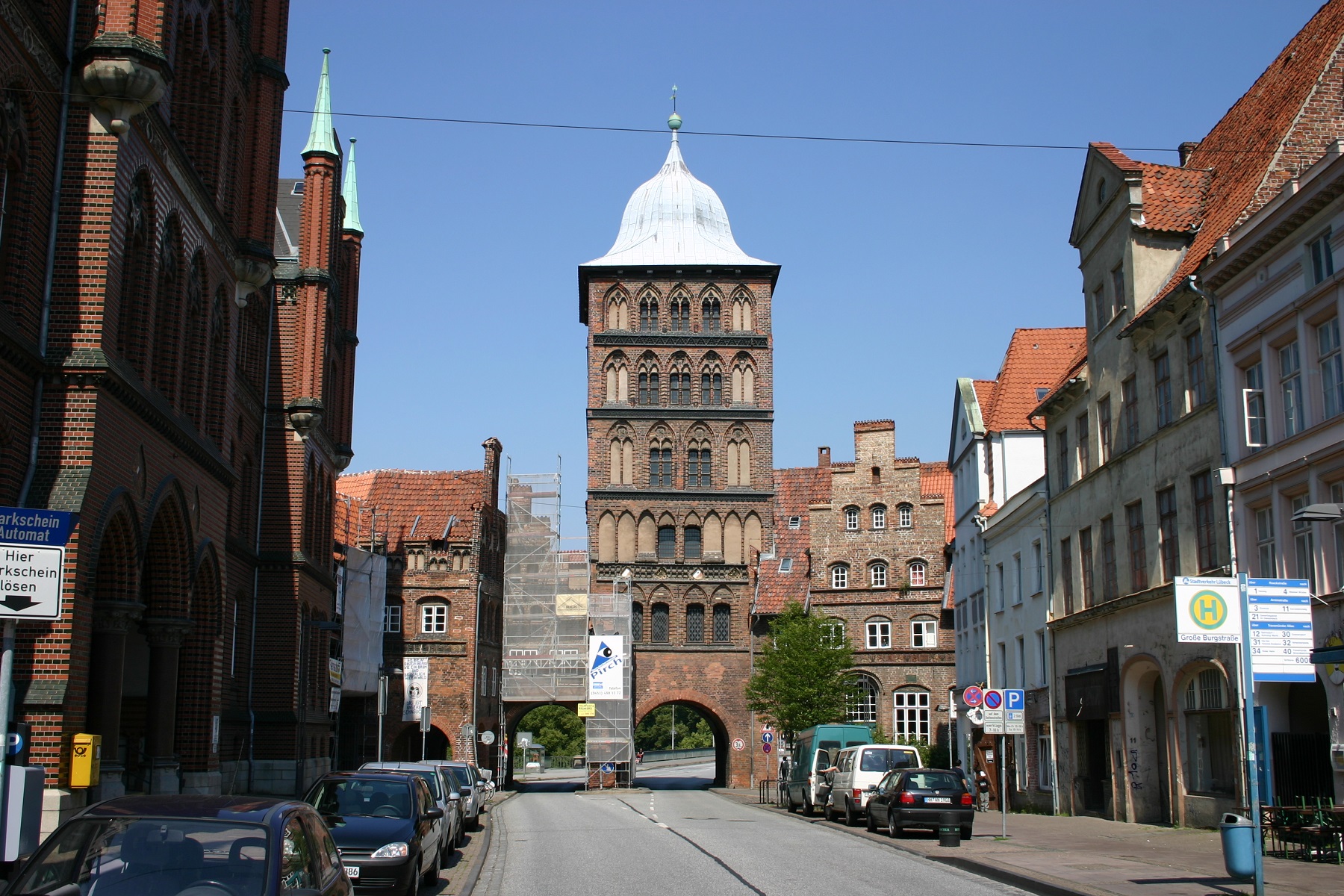
The castle gate is the northernmost of Lübeck’s four old city gates. It was built in 1444 in the late Gothic style, however, the top of the tower did not appear until 1685. The name of the gate comes from the town’s old castle, which was located by the river Trave.
The author, artist and Nobel laureate Günter Grass lived for many years in Lübeck, where this museum is now housed. Grass wrote i.a. The tin drum in 1959, and the museum depicts his life and works.
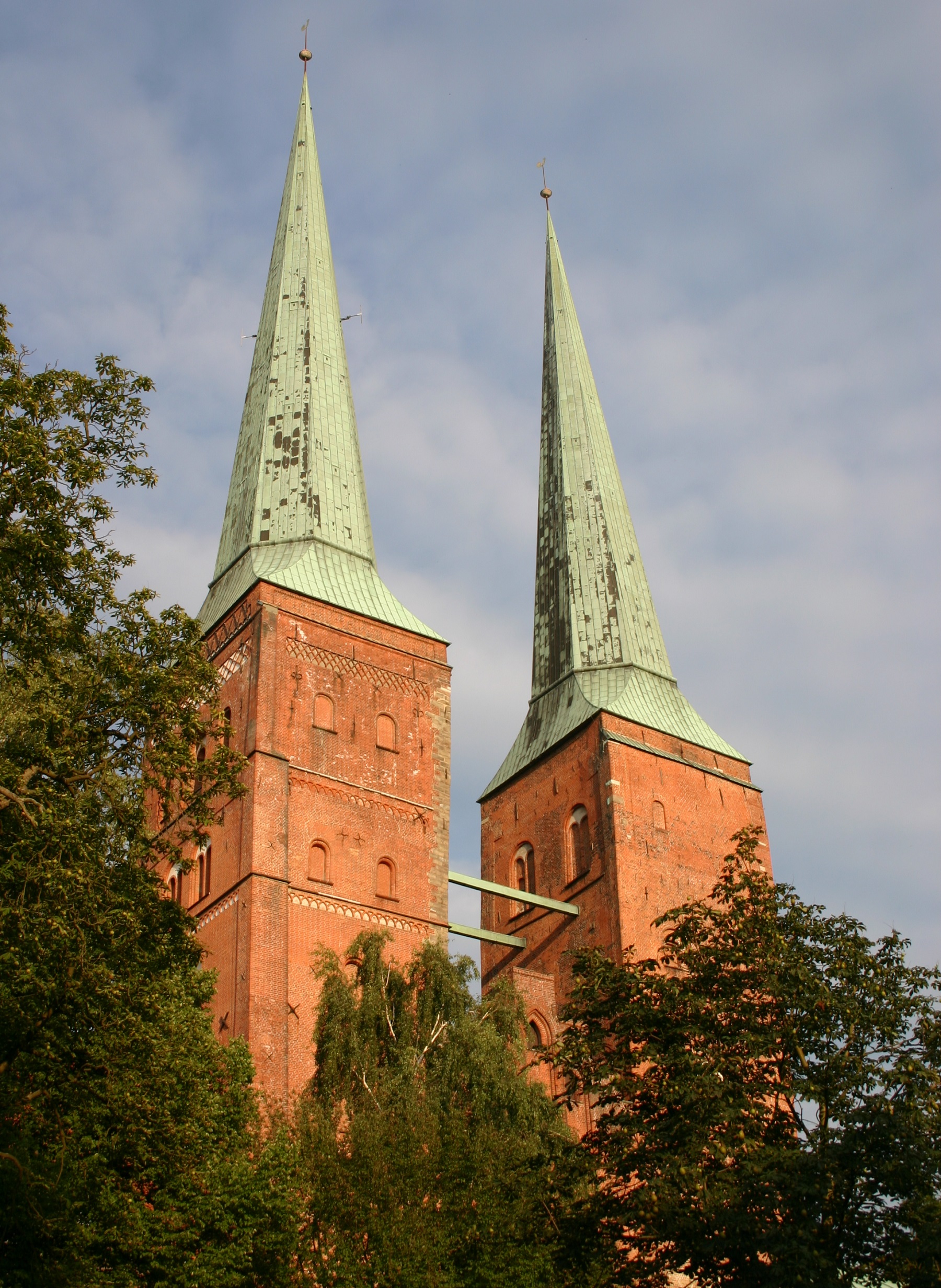
This is Lübeck’s mighty cathedral, the city’s oldest building. The church was founded by Henry the Lion in the 12th century and there is a lot to see in the large church. This includes Bernt Notke’s Triumphal Cross from 1477.

In the area between Lübeck and Kiel lies the beautiful landscape with lakes, forests and hills called Holstein Switzerland. You can visit the cities of Plön, Eutin and Malente and board a boat trip on eg Großer Plöner See. It is a very nice and lovely experience.
The city of Hamburg is the largest city in northern Germany, and it is beautifully situated on the Elbe with countless sights. The large harbor and areas such as Speicherstadt form part of the city center, and one can also see impressive churches, the Old Elbe Tunnel, Altona and a huge miniature wonderland.
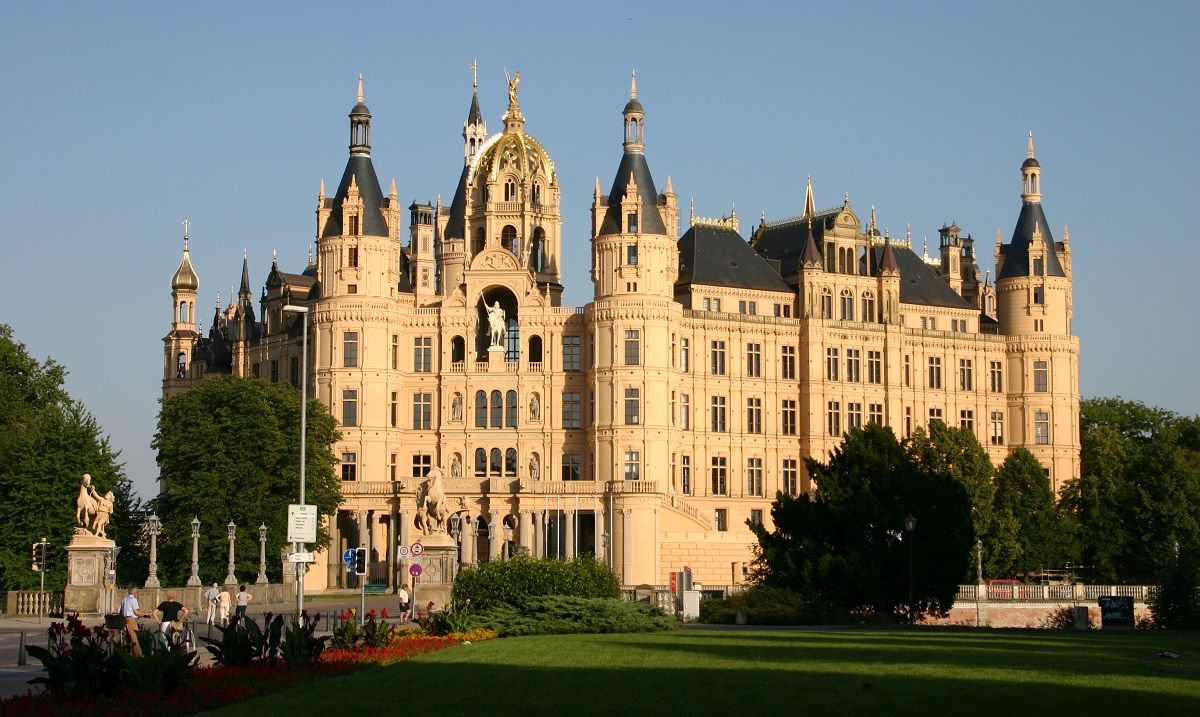
Schwerin is the capital of the state of Mecklenburg-Western Pomerania and the historic residence city of the dukes and grand dukes of Mecklenburg-Schwerin. Schwerin Castle is a true fairy tale construction with its many towers and spires. It is a must visit during a walk in the city, but many other large buildings are also here within a comfortable walking distance.
Wismar is one of the historic North German Hanseatic cities, where you can see many old buildings in the so-called Brick Gothic. This architectural style is typical for the once prosperous cities of the Hanseatic League. In Wismar you should see the market square, the great churches of the city and the old harbor.
Sandstraße 1
haerder-center.de
Königstraße 54-56
karstadt.de
Königstraße 55
koenigpassage.com
Konrad-Adenauer-Straße 2
Breite Straße, Königstraße, Hüxstraße, Fleischhaurstraße
TheaterFiguren-Museum
Kolk 14
tfm-luebeck.com
Hansa Park
Sierksdorf
hansapark.de
Hafenrundfahrt
An der Obertrave, An der Untertrave, Holstentor
quandt-linie.de
luebecker-barkassenfahrt.de
Tierpark Lübeck
Waldstraße 2
tierpark-luebeck.de
Museum für Natur und Umwelt
Mühlendamm 1-3
die-luebecker-museen.de
Niederegger Marzipan Salon
Breite Straße 89
niederegger.de
The area around Lübeck was inhabited by Slavic people in about 700 years. Many of the former Anglo-Saxon residents of the present Schleswig-Holstein had, during the centuries of migration, abandoned the site in favor of today’s England.
At the beginning of the 8th century, the ruler of France, Charles the Great, brought other people, and they founded the city of Liubice on the banks of the River Trave. Liubice became the most important of the cities of Slavic obituaries, but in 1129 it was burned down by the Rani people of Rügen.
In 1143, Adolf II of Schauenburg and Holstein founded the German city of Lübeck on the site of Bucu, whose name comes from the Slavic castle which was located at the place where the Burgkloster now lies. In 1158, Adolf II lost his castle on the site to Henrik Løve, who ruled Lübeck until 1181. He granted the city city rights in 1160 following the example of the city of Soest. It then became a free state city for a few years before the German-Roman emperor Frederick Barbarossa set up a city council whose rule came into force in Lübeck until the 19th century.
Although the city had obtained its own city government, it was subject to changing rulers the following time. Until 1197 it belonged to the Duchy of Saxony, Holstein until 1217 and Denmark until 1227. From 1226, Emperor Frederick II had made Lübeck a free city state, and it retained it under various forms and rulers until 1937.
Around 1200, Lübeck became a shipping port for settlers who took to the Baltic areas which the Liveland Order and later the German Order conquered.
In the 1300s, Lübeck became the so-called queen of the Hanseatic League. It was the most powerful and strongest member of trade cooperation. The Hanseatic cities extended from the original northern German cities to large parts of the Baltic Sea and later elsewhere in Northern Europe. In 1356, the first Hanseatic days were held in Lübeck.
In 1375, Emperor Charles IV appointed five wonders of the empire; Lübeck, Florence, Pisa, Rome and Venice.
Lübeck and the other cities of the Hanseatic League flourished, and enormous wealth went to and through the cities. The biggest challenge was the many battles against Denmark, whose cities were outside the Hanseatic League. Lübeck won conflicts with Denmark in 1435 and 1512, but became involved in the Danish civil war, the Count’s Feud, 1534-1536. Lübeck was on the losers’ side in the Count’s Feud, and then the city’s role slowly diminished.
In 1629, the peace in Lübeck was signed. The peace ended Denmark’s participation in the Thirty Years War, a war in which Lübeck managed to remain neutral.
The Hanseatic League held the last Hanseatic days in 1669, and then the old and formerly successful trade union was de facto dissolved. New trade routes across the Atlantic had arrived, but Lübeck’s position as a trading town in the Baltic Sea was maintained.
With the dissolution of the German-Roman Empire on August 6, 1806, Lübeck became a sovereign state for the first time. Already on November 6, the same year, French troops occupied the city after a battle against German troops led by Gebhard Leberecht von Blücher.
In the years that followed, Lübeck suffered commercially from the restrictions of the Continental Blockade imposed by France against England and its allies. In addition, from 1811 to 1813, Lübeck formally became part of the First French Empire. In 1813, Lübeck regained his status from before 1811, and after the Vienna Congress in 1815, Lübeck gained his status as a sovereign city state. Together with 38 other German states, the city was a member of the German Confederation, and from 1866 a part of the military alliance of the Northern German Confederation, which had Prussia as the leading state out of the 22 included.
In 1871, Lübeck became an autonomous part of the newly formed German Empire. At this time, approximately 52,000 inhabitants lived in the city, a number that grew to nearly 100,000 during the 19th century.
In 1937, the Nazi regime passed the law Law über Groß-Hamburg and other Gebietsbereinigungen. It included a swap of land between the states of Hamburg and Prussia. For Lübeck, that meant that the city’s freedom ended and most of the land was subject to the state of Schleswig-Holstein, which belonged to Prussia. A smaller part of Lübeck came under Mecklenburg.
During World War II, Lübeck was the first German city to suffer heavy aerial bombardments. The largest attack was launched on March 28, 1942, and Lübeck fell victim to a fire that ravaged and destroyed large parts of the Old Town; among others, most of the city’s great medieval churches. The city was conquered without resistance by British soldiers on May 2, 1945. During the war years, the city’s population increased from 150,000 in 1939 to around 220,000 after the war, one of the reasons being many new arrivals from the lost German eastern territories in 1945.
From 1945 the planning of the large-scale reconstruction could begin, and one of the earliest major projects became the largest church, the Marienkirche, which was largely rebuilt in 1947-1959. After several decades, the city was modernized and with many of the major buildings rebuilt. The restored historic district was included in the UNESCO World Heritage List in 1987.
Overview of Lübeck
Lübeck was the queen of the Baltic Sea Region’s Hanseatic cities. It still is, and that is not without reason. Majestic churches and countless houses, monasteries and other medieval buildings stand as evidence of the immense wealth that came to the city over the centuries with trade routes.
The old town of Lübeck is located on an island in the Trave River, which provides a natural boundary for this part of the city where everything is within walking distance. In addition, the river and its banks are like a blue-green belt around the city, which can be enjoyed in many places, for example on a river boat, where you sail the Trave around the center of Lübeck.
About the upcoming Lübeck travel guide
About the travel guide
The Lübeck travel guide gives you an overview of the sights and activities of the German city. Read about top sights and other sights, and get a tour guide with tour suggestions and detailed descriptions of all the city’s most important churches, monuments, mansions, museums, etc.
Lübeck is waiting for you, and at vamados.com you can also find cheap flights and great deals on hotels for your trip. You just select your travel dates and then you get flight and accommodation suggestions in and around the city.
Read more about Lübeck and Germany
Buy the travel guide
Click the “Add to Cart” button to purchase the travel guide. After that you will come to the payment, where you enter the purchase and payment information. Upon payment of the travel guide, you will immediately receive a receipt with a link to download your purchase. You can download the travel guide immediately or use the download link in the email later.
Use the travel guide
When you buy the travel guide to Lübeck you get the book online so you can have it on your phone, tablet or computer – and of course you can choose to print it. Use the maps and tour suggestions and you will have a good and content-rich journey.
Holstentor • St Mary’s • City Hall • Lübeck Marzipan • River Cruise
Overview of Lübeck
Lübeck was the queen of the Baltic Sea Region’s Hanseatic cities. It still is, and that is not without reason. Majestic churches and countless houses, monasteries and other medieval buildings stand as evidence of the immense wealth that came to the city over the centuries with trade routes.
The old town of Lübeck is located on an island in the Trave River, which provides a natural boundary for this part of the city where everything is within walking distance. In addition, the river and its banks are like a blue-green belt around the city, which can be enjoyed in many places, for example on a river boat, where you sail the Trave around the center of Lübeck.
About the upcoming Lübeck travel guide
About the travel guide
The Lübeck travel guide gives you an overview of the sights and activities of the German city. Read about top sights and other sights, and get a tour guide with tour suggestions and detailed descriptions of all the city’s most important churches, monuments, mansions, museums, etc.
Lübeck is waiting for you, and at vamados.com you can also find cheap flights and great deals on hotels for your trip. You just select your travel dates and then you get flight and accommodation suggestions in and around the city.
Read more about Lübeck and Germany
Buy the travel guide
Click the “Add to Cart” button to purchase the travel guide. After that you will come to the payment, where you enter the purchase and payment information. Upon payment of the travel guide, you will immediately receive a receipt with a link to download your purchase. You can download the travel guide immediately or use the download link in the email later.
Use the travel guide
When you buy the travel guide to Lübeck you get the book online so you can have it on your phone, tablet or computer – and of course you can choose to print it. Use the maps and tour suggestions and you will have a good and content-rich journey.

Salzspeicher is the name of six warehouse buildings along the river Trave. They were built in the period 1579-1745 and used to store the salt that was sailed to here from the Lüneburg area.
St. Petri is one of Lübeck’s great churches. It was built through the 1100s-1400s with a 108 meter/354 foot high church tower, in which there is a viewing platform at a height of 50 meters/164 feet. From here there is a beautiful view of the city.

Niederegger is an icon of Lübeck, and the marzipan salon is home to the famous Lübeck marzipan, which is available in countless designs and colors.
This pharmacy is one of the city’s oldest secular buildings. The present gabled brick house was built in 1230 and was inhabited for centuries before becoming a pharmacy in 1812.

This house is the setting for Thomas Mann’s Nobel Prize-winning novel Buddenbrook. The Mann family lived in the beautiful old town house from 1758, and it is now open as a museum.
Saint Catherine is the only preserved monastic church in Lübeck, and it is today open as a museum church. You can e.g. see Tintoretto’s mural of Lazarus’ resurrection here.

The castle gate is the northernmost of Lübeck’s four old city gates. It was built in 1444 in the late Gothic style, however, the top of the tower did not appear until 1685. The name of the gate comes from the town’s old castle, which was located by the river Trave.
The author, artist and Nobel laureate Günter Grass lived for many years in Lübeck, where this museum is now housed. Grass wrote i.a. The tin drum in 1959, and the museum depicts his life and works.

This is Lübeck’s mighty cathedral, the city’s oldest building. The church was founded by Henry the Lion in the 12th century and there is a lot to see in the large church. This includes Bernt Notke’s Triumphal Cross from 1477.
Similar to Lübeck Travel Guide